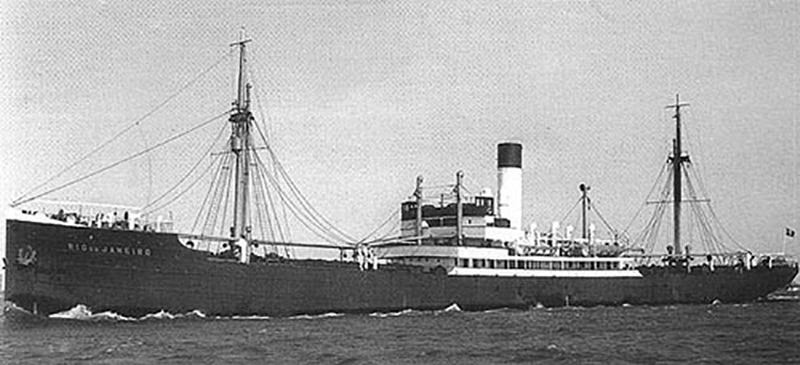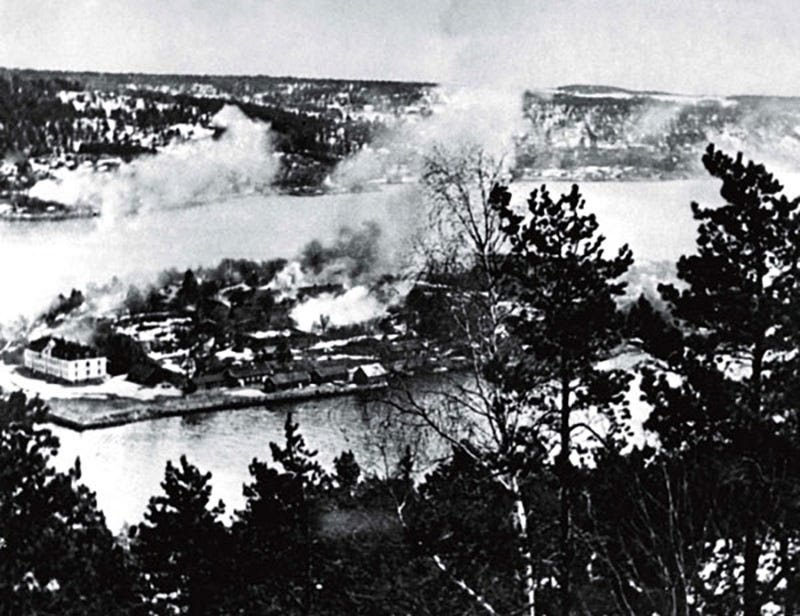Denmark and Norway invaded
9th April 1940: Hitler moves against neutral countries as he turns his attention to Western Europe


When Nazi Germany invaded Poland in September 1939, Britain and France had declared war on Hitler’s Germany as a consequence. A “state of war” existed between the two sides, but there was little military activity in Western Europe.
In what became known as the “Phoney War”, neutral countries, including Belgium, the Netherlands, and the Nordic states, scrupulously avoided doing anything to provoke Hitler. Britain and France prepared for war, but many still hoped to find a way to prevent an all-out confrontation.
All that changed on 9th April when Hitler launched surprise attacks on Denmark and Norway. He was moving preemptively to stop Britain from seizing control of his supply route of iron ore from Sweden. Passing through Noway, this was a vital component of Germany’s war machine. He also wanted the Norwegian ports to give him better access to the North Atlantic.
Denmark became an incidental casualty as a stepping stone to Norway.


Niels Bamberger1 describes the German invasion of Denmark in 1940 and the impact on civilians:
We were in school that day. We saw loads and loads of planes, bombing planes coming one after--I mean hundreds and hundreds of planes coming in, and Germans on motorcycles, horses dragging cannons and the big tanks all over the place. It didn't take more than a couple of hours 'til they took over the country. Like I said they couldn't resist. Denmark was a very small country.
And, uh, life went on as before, except that you are not allowed to walk on this side of the street, in front of the bank. They would post soldiers with, uh, guns and, and steel helmets and things like that in front of the banks and the hotels and important institutions that they wanted to guard. But besides that nothing happened really.
In Norway, the Germans faced a small but determined defence force.

Either I will be decorated, or I will be court-martialed. Fire!
The main German task group, with the shortest distance to travel, sailed up the Oslofjord towards the Norwegian capital, Oslo, in the early hours of 9th April. The heavy cruiser Blucher led the way. The task force aimed to land a few thousand troops in Oslo soon after daybreak. It would all be over before the Norwegians woke up.
But the Oscarborg fortress lay on an island in the middle of the Fjord and proved to be a deadly obstacle. The commander of the fortress was uncertain whether the ships he faced were English or German. Germany was relying on surprise and subterfuge to gain an early advantage and had not declared war. Norway was still neutral, so it was not clear whether the shore battery could open fire within the standing rules of engagement.

64-year-old Colonel Eriksen decided that he could open fire because the ships had passed another fortress further down the Fjord, which had fired warning shots. At 0421hr declared:
Either I will be decorated, or I will be court-martialed. Fire!
From a range of approximately 1800 metres, two 11-inch (28cm) shells from the two Krupps guns that were capable of firing caused massive damage to the Blucher. The first round entered a magazine, causing explosions and setting the Blucher on fire. The second shell disabled the electrical supply used by the Blucher’s guns.
The fortress was manned mainly by reservists and recruits who had been called up within the last week, and they were not yet trained up to reload during the time it took for the Blucher to pass them.
A few minutes later, a shore-based torpedo battery commanded by Commander Andreas Anderssen caused the fatal damage. Anderssen had recently replaced the regular commander who had fallen ill. He had been retired for thirteen years and had only been called in to take over because he lived locally.
The antiquated Austro-Hungarian torpedoes were of unknown reliability, but they both detonated, causing catastrophic damage to the Blucher. She soon sank. Of the 800 crew, plus 1500 troops intended for the occupation of Oslo, some reports suggest that only a few hundred survived.
The remaining ships in this task group were forced to land their troops some 50 miles away from their objective, Oslo. The interruption to the German plans allowed the Norwegian Royal Family to escape. But the capture of Oslo itself was only delayed by a matter of hours. It was taken by airborne troops later that day.
The Germans moved swiftly to consolidate their hold over Norway. They were much better equipped than their Norwegian opponents. The bulk of the Norwegian army was comprised of reservists with limited training. Norway had not fought a war for 125 years and most its weapons were obsolete. Crucially it had no anti-tank guns and few anti-aircraft guns. Even though the ranks of the Norwegian Army were quickly swelled by thousands of reservists rallying to the cause, many of whom were expert riflemen, they had lacked the firepower to confront the Germans. The Norwegians were forced to adopt a holding strategy while waiting for support from Britain and France.





